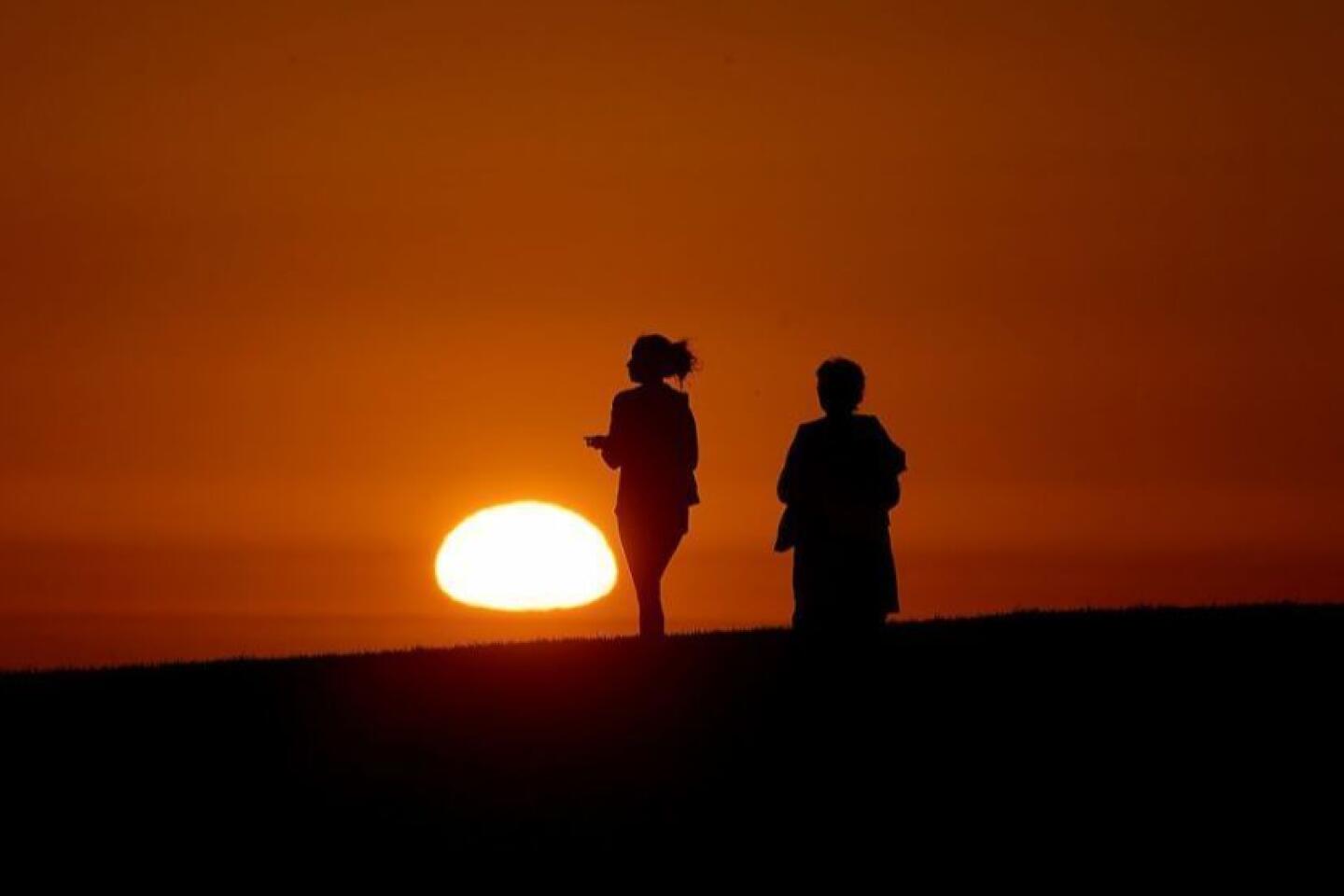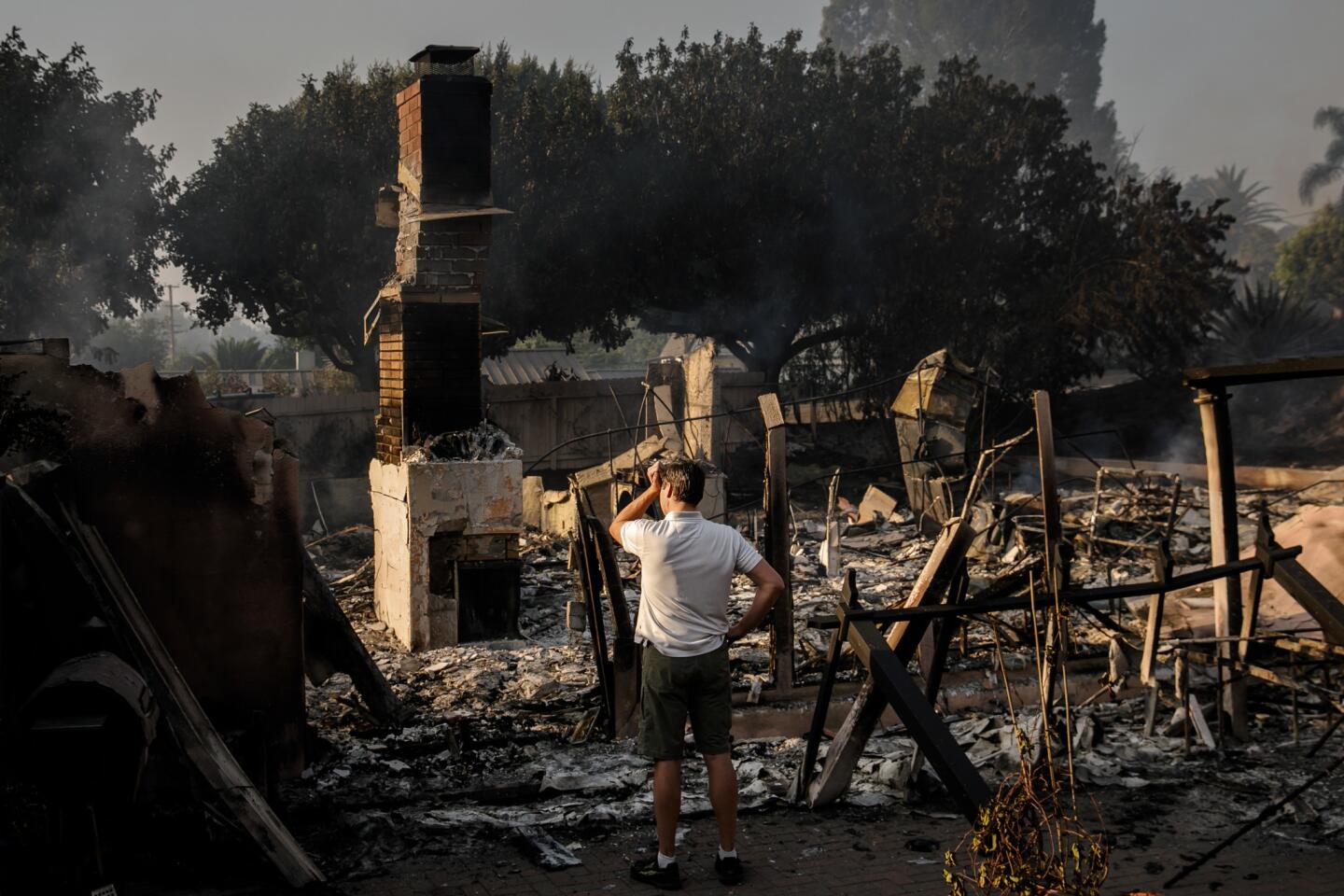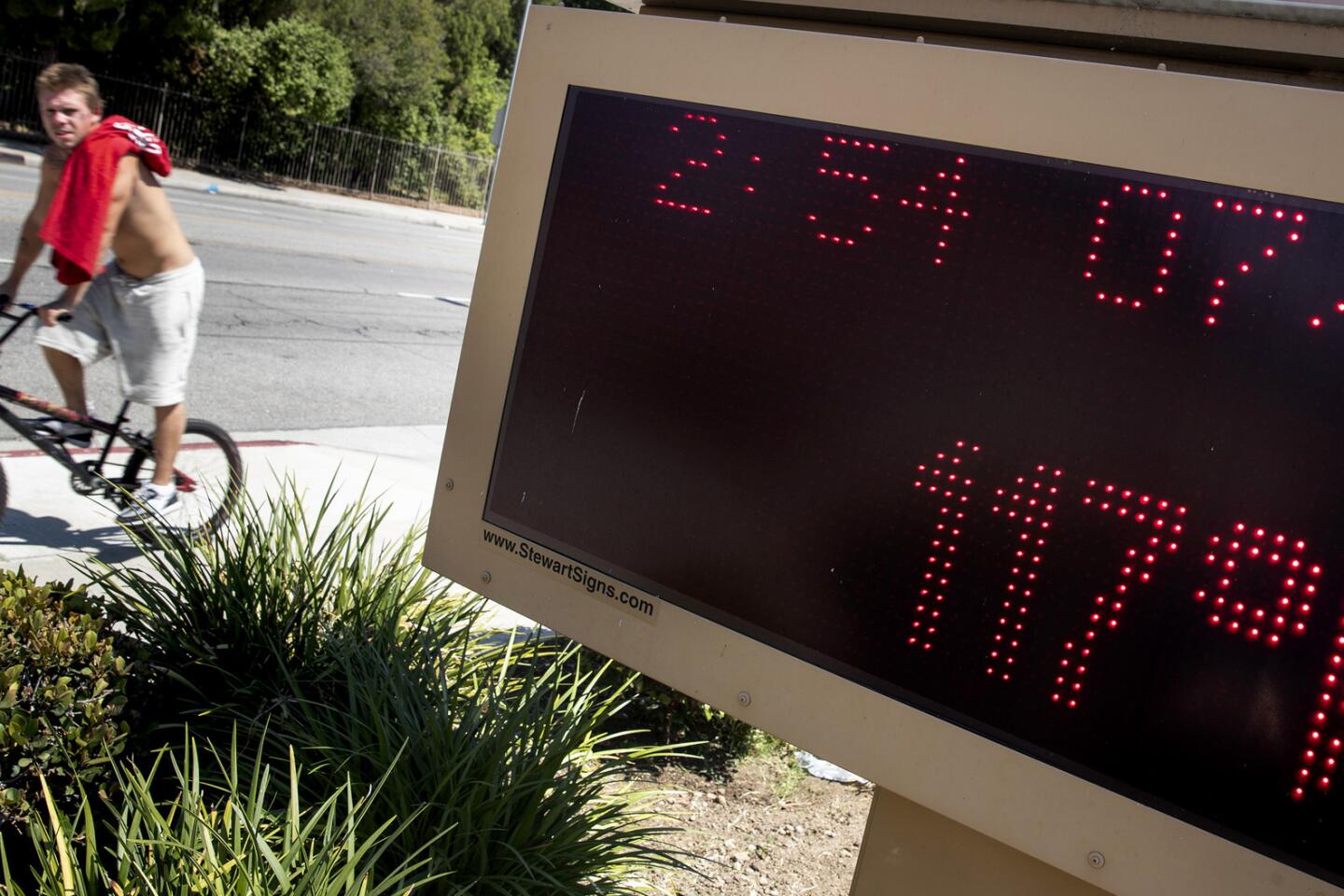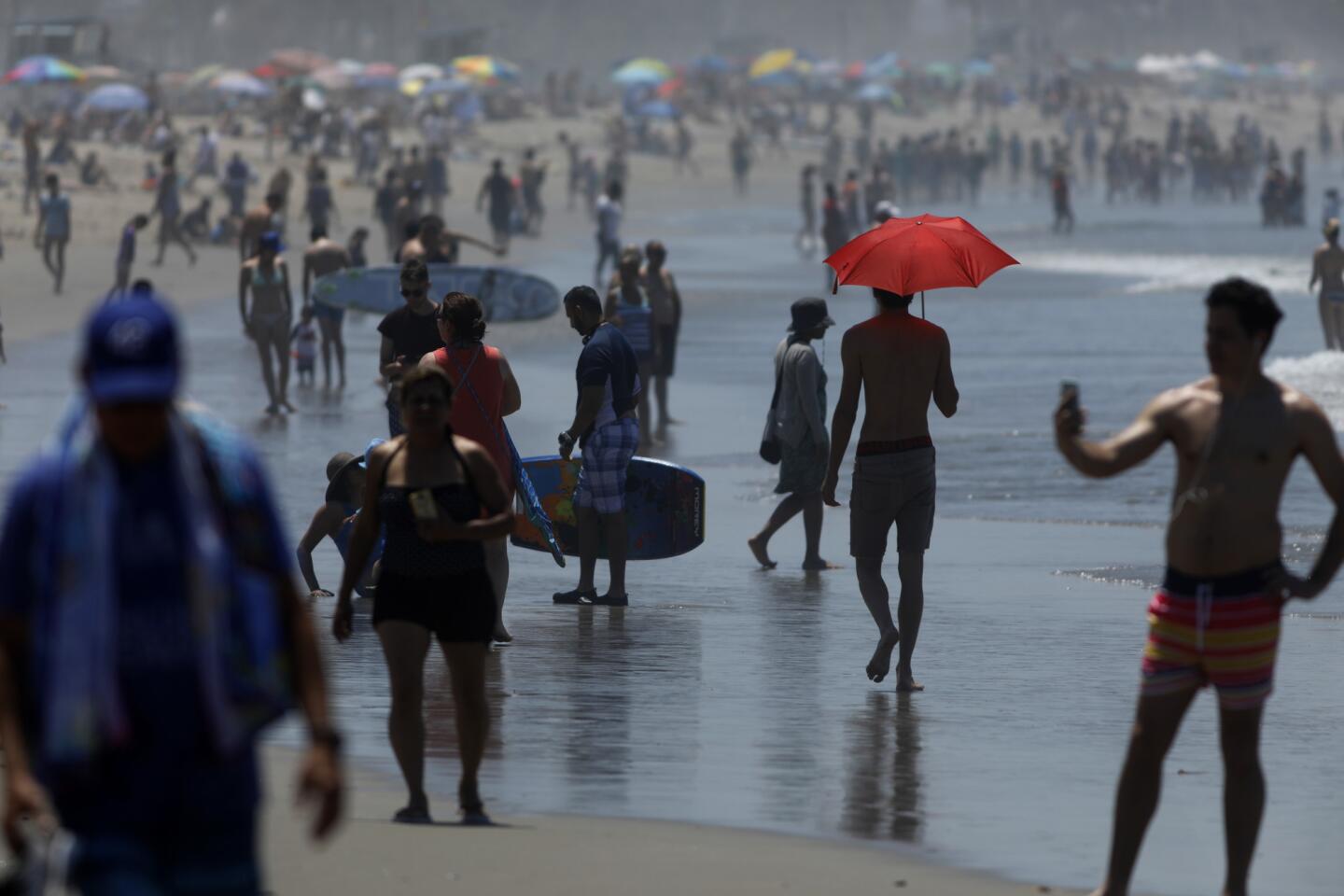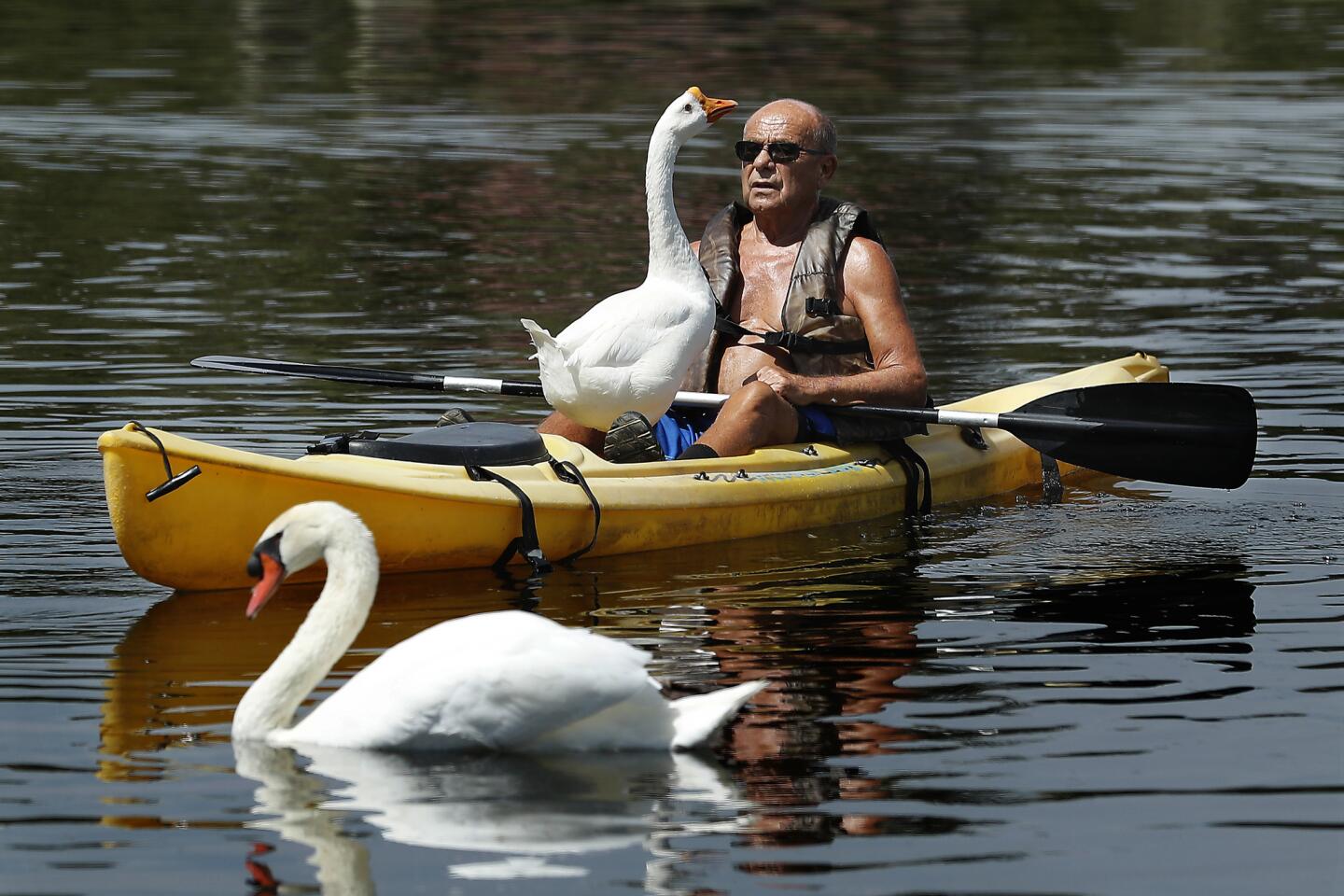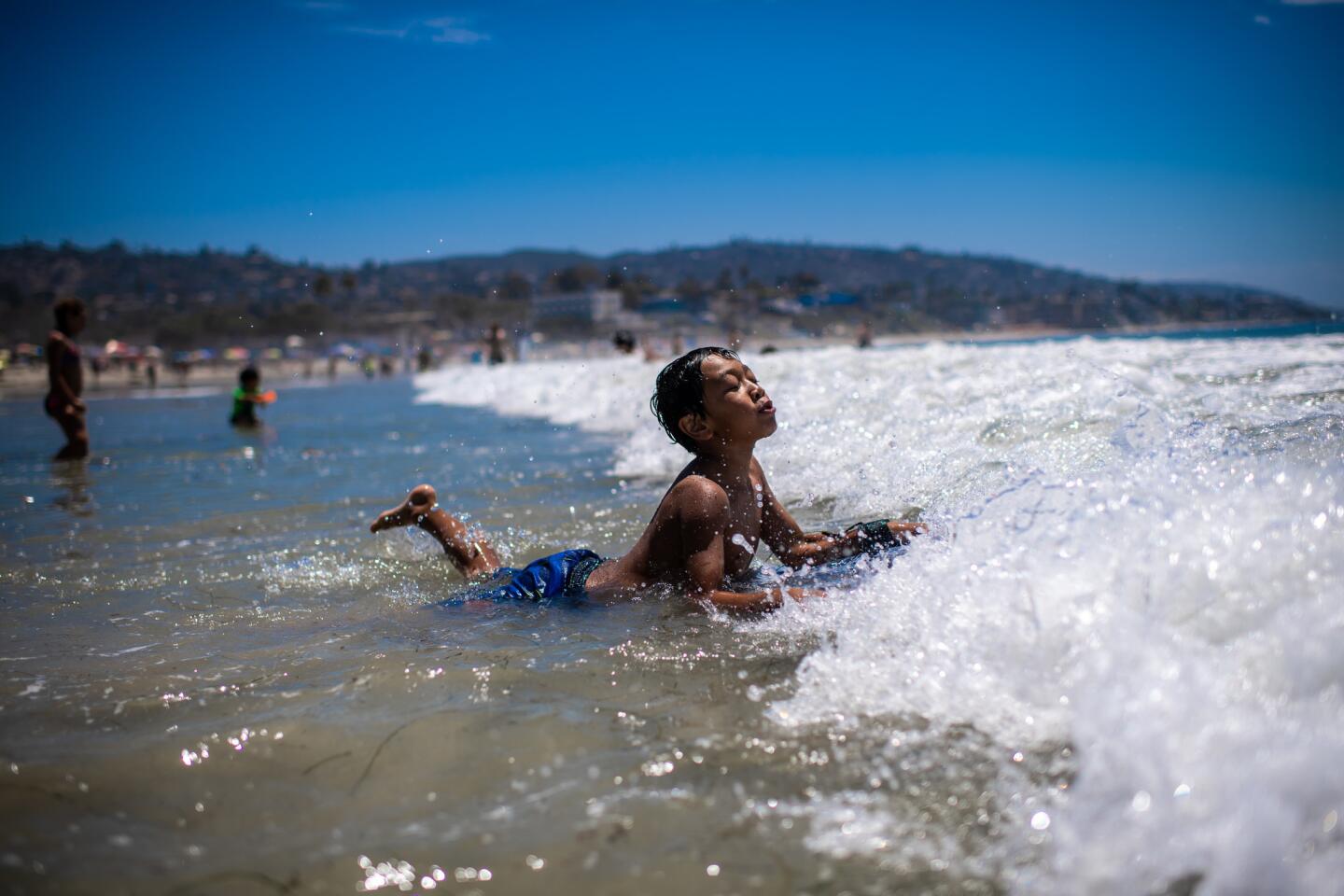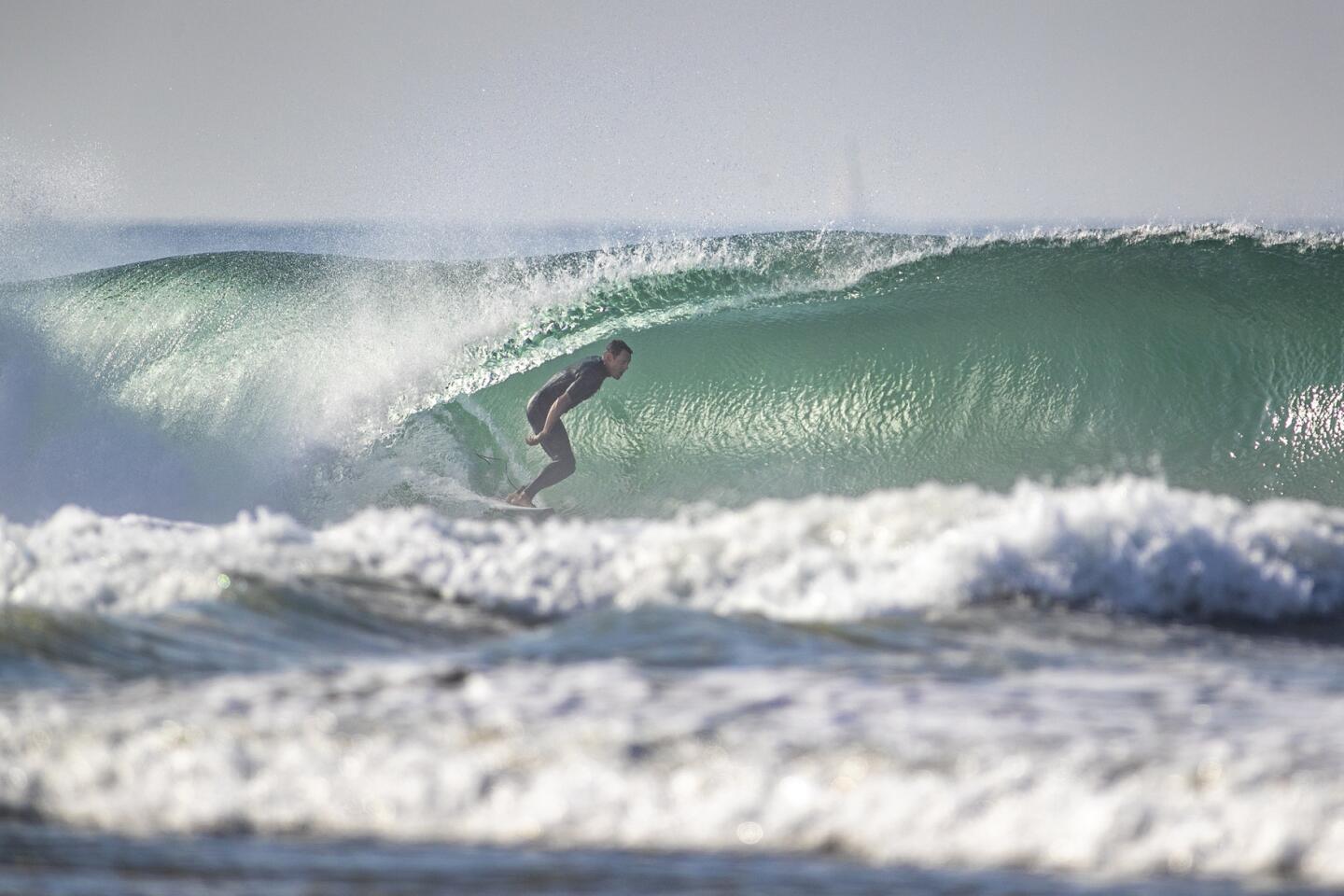Column: Climate change has come to your neighborhood, and the sizzle may never subside
- Share via
A colleague once observed, many years ago, that California has two seasons.
Green and brown.
For the record:
10:05 a.m. July 18, 2018An earlier version of this column identified Leah C. Stokes as an assistant professor of environmental economics. Stokes’ field is environmental politics.
We are in the latter, and death has visited my neighborhood this summer. Half the ground cover in my frontyard has burned to a crunchy crisp. Across the street, a neighbor draped white sheets over shrubbery that hadn’t already gone brittle.
The Los Angeles-area forecast offers no relief. After weeks of relentless heat, including record-shattering temperatures more commonly associated with Palm Springs, it’s supposed to get hotter over the next several days.
OK, so it’s Los Angeles, where summers have always been blistering unless you live in a beach town.
Feeling the heat like never before
But last summer was crazy, this one has only just begun, and I’m wondering if we’re headed for a time when Burbank feels more like Barstow and Huntington Park feels more like Hemet.
“When we bought our house and renovated it 20 years ago, people were saying we didn’t need air conditioning,” said David Neelin, a professor of oceanic and atmospheric sciences at UCLA and a resident of Beverly Glen.
Neelin said he’s been grateful on many occasions that he went with air conditioning, and disappointed that when the recent record-breaking heat blasted Los Angeles, his power and AC went out.
“We built energy infrastructure to deliver at peak demands, and we’re now tending to exceed those demands during heat waves,” said Neelin, an award-winning expert on environmental change who has researched global warming’s effect on California’s increasingly extreme drought-to-deluge cycles.
I asked Neelin if he thinks climate change is happening fast enough that his neighborhood climate has been altered in just two decades.
“I’m pretty sure that it has,” Neelin said, as have climates around the world.
Robbie Munroe of the National Weather Service told me this summer actually got off to a bit of a cool start but then took a sharp turn. This year’s high so far in downtown Los Angeles was 108 compared with 98 by this time last year. The top three-day average for high temperatures was 103.3 this year, compared with 96.7 last year.
It’s not just our highs that are higher. Our lows are significantly higher too.
“To have this kind of heat in the first half of summer is certainly unusual,” Munroe said.
And it’s not just the summer. We reported last year that temperatures in the fall are rising fast, fueling more dangerous brush fires. To make matters worse, autumn rainfall has been declining dramatically.
Global warming is strong suspect
Global warming can’t be proved or accurately charted over such narrow time spans, and natural weather variability is always a factor in changes we notice. But the vast majority of legitimate scientists have no doubt we’re cooking the planet, citing, among other markers, that severe heat is greater in frequency and intensity.
This led Leah C. Stokes, an assistant professor of environmental politics at UC Santa Barbara, to wonder why we in the news media often report on heat waves, wildfires, flooding and other catastrophes without making the connection to the obvious.
“The climate we knew is no more,” Stokes said in an op-ed for The Times.
“I teach a summer session, and by coincidence, that was our topic today,” said Stanford University professor Noah Diffenbaugh, who has researched — among other things — the effect of climate change on agriculture.
Under current warming trends, Diffenbaugh said, California’s proud wine production could get corked.
“The highest quality and most expensive grapes grow in a narrow climate envelope, and what’s clear from looking at the historical record is how temperatures are likely to change there in the coming decade,” Diffenbaugh said.
That narrow envelope, in which climate conditions have been perfect for growing prize-winning wine, could be reduced by half over the next three decades, Diffenbaugh said.
Hotter nights are key clue
Ben Santer, a climate scientist with Lawrence Livermore National Laboratory, knows something about all this. His many awards include a MacArthur “genius” grant, and he contributed to research that won the 2007 Nobel Peace Prize for Vice President Al Gore and the Intergovernmental Panel on Climate Change.
“This isn’t a big scientific surprise,” Santer told me about the prevalence of longer and more frequent heat waves. That’s a key marker of changes caused by the burning of fossil fuels, he said, as is the fact that nighttime temperatures are rising significantly and record-setting hot days outnumber record-setting low temperatures by a 5 to 1 ratio.
When I called Santer, he said he had taken a grueling hike in sweltering heat last weekend in an East San Francisco Bay park, trying to pump his stamina for a coming trip to the Juneau Icefield Research Program, where students study the melting of the ice cap as greenhouse gases warm the planet. Santer said that last summer, Northern California experienced an extended heat wave that was unlike anything he had experienced in his 28 years of living there.
Santer said his specialty is to do what’s known as climate change fingerprinting. In other words, for those who claim there’s no such thing as global warming, he presents evidence to the contrary.
Not that everyone understands, or cares to acknowledge, irrefutable evidence that might not serve their masters in fossil fuel industries.
“It’s very frustrating to have some understanding of the human causes of climate change and the seriousness of the problem and to listen to very powerful people — among them the president of this country — dismiss well-established scientific understanding as a hoax,” Santer said. “Or, in the words of my boss [Energy Secretary Rick Perry], ‘One contrived phony mess.’ ”
What we need to do
Given who’s running the country and attempting to dismantle environmental protections and clean energy initiatives, I asked Santer what he thought people could do to counter those efforts.
“Understand what science tells you and what’s at stake here,” he said, from rising sea levels to extreme weather to effects on commerce and human activity.
Scientific American published a piece by Santer this week that begins:
“Recently, President Trump claimed to be a ‘very stable genius.’ ”
As you suspected, it was not a tribute to the Donald.
It ended with this:
“Our hopes and dreams for a better world for all citizens of this planet are unlikely to be realized if Earth’s climate continues to spiral dangerously towards a new and very different state. We cannot allow a self-proclaimed “very stable genius” to destroy those hopes and dreams, and to launch us all into a very unstable climate future.”
Get more of Steve Lopez’s work and follow him on Twitter @LATstevelopez
More to Read
Sign up for Essential California
The most important California stories and recommendations in your inbox every morning.
You may occasionally receive promotional content from the Los Angeles Times.
